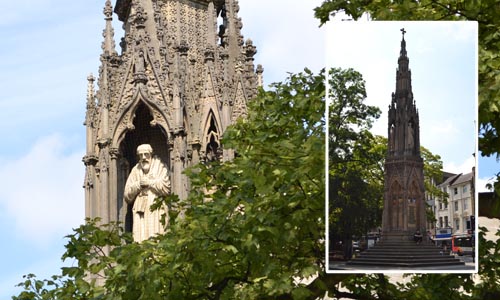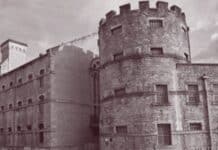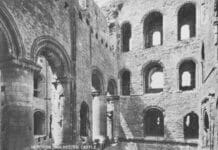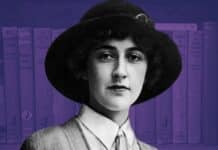The Oxford Martyrs Memorial recalls one of the darkest and bloodiest chapters in British history, DAVID SAUNDERSON says

Oxford has long been one of our nation’s greatest cities of learning. And as such, it has always been a hot bed for passionate intellectual and spiritual debate.
So it’s not surprising that Oxford’s theologians and scholars were at the heart of the tumultuous Reformation caused when King Henry VIII split from the Roman Catholic Church and created the Church of England in the 16th Century.
The Oxford Martyrs Memorial in St Giles Street, Oxford, with its imposing spiky tower recalls one of the darkest and bloodiest chapters in British history.
While King Henry VIII had created Anglicanism, his daughter and successor, Queen Mary Tudor steadfastly retained her Roman Catholic beliefs taught to her by her mother, Catherine of Aragon.
Queen Mary Tudor – who reigned from 1553 to 1558 following her father’s death – became known as “Bloody Mary” for the many executions she ordered in her attempt to revert England back to Roman Catholicism.
In less than four years, Queen Mary ordered about 300 Protestants be burned at the stake for refusing to recant their heresy.
The memorial in St Giles Street commemorates the three Oxford Martyrs – Archbishop of Canterbury Thomas Cranmer and Anglican bishops Nicholas Ridley and Hugh Latimer – who were executed on the orders of Queen Mary for refusing to revert back to Roman Catholic Church.
The three Protestant martyrs immortalised in the stone memorial were convicted for heresy in Oxford and imprisoned at the Bocardo Prison near St Michael at the North Gate Church – the city’s oldest church.
Bishops Latimer and Ridley were executed by being burnt at the stake on October 16, 1555, with Archbishop Cranmer meeting the same fate on March 21, 1556.
(FYI Thomas Cranmer was the Archbishop of Canterbury had annulled King Henry VIII’s marriage to Catherine of Aragon, effectively making Mary Tudor illegitimate. “I’ll show you what kind of b*stard I am,” she probably didn’t say when she ordered his death, but maybe thought it.)
The execution happened in Broad Street, which is about 20 metres away from the memorial and is noted by a cross of bricks in the road.
The neo-gothic Oxford Martyrs Memorial was built in the 1840s by Church of England members who were opposed to an Oxford-based movement to emphasise similarities between Anglican and Roman Catholic theology. The memorial was meant to remind locals of the atrocities inflicted on the martyrs by the Roman Catholic Church.
Oxford Martyrs Memorial inscription
The inscription on the memorial says:
“To the Glory of God, and in grateful commemoration of His servants, Thomas Cranmer, Nicholas Ridley, Hugh Latimer, Prelates of the Church of England, who near this spot yielded their bodies to be burned, bearing witness to the sacred truths which they had affirmed and maintained against the errors of the Church of Rome, and rejoicing that to them it was given not only to believe in Christ, but also to suffer for His sake; this monument was erected by public subscription in the year of our Lord God, MDCCCXLI.”
The door of the cell from the Bocardo Prison, which held the Oxford Martyrs, can be seen in St Michael at the North Gate Church not far from the Moment. St Michael is Oxford’s oldest building – an Anglo-Saxon-style church – built about 1040 – which was mentioned in the Doomsday Book.








Don’t forget the five Catholics martyred in Oxford, and the 30 or so Catholic martyrs who were former students 🙂
Cranmer was hardly an example of maintaining truths, with his two? three? recantations, I can never understand why he is held up as an example in this regard. He seems to have found the courage of his convictions at the last, so some encouragement there for those who have wimped out, but not really in the same class as Margaret Clitheroe, to name only one.